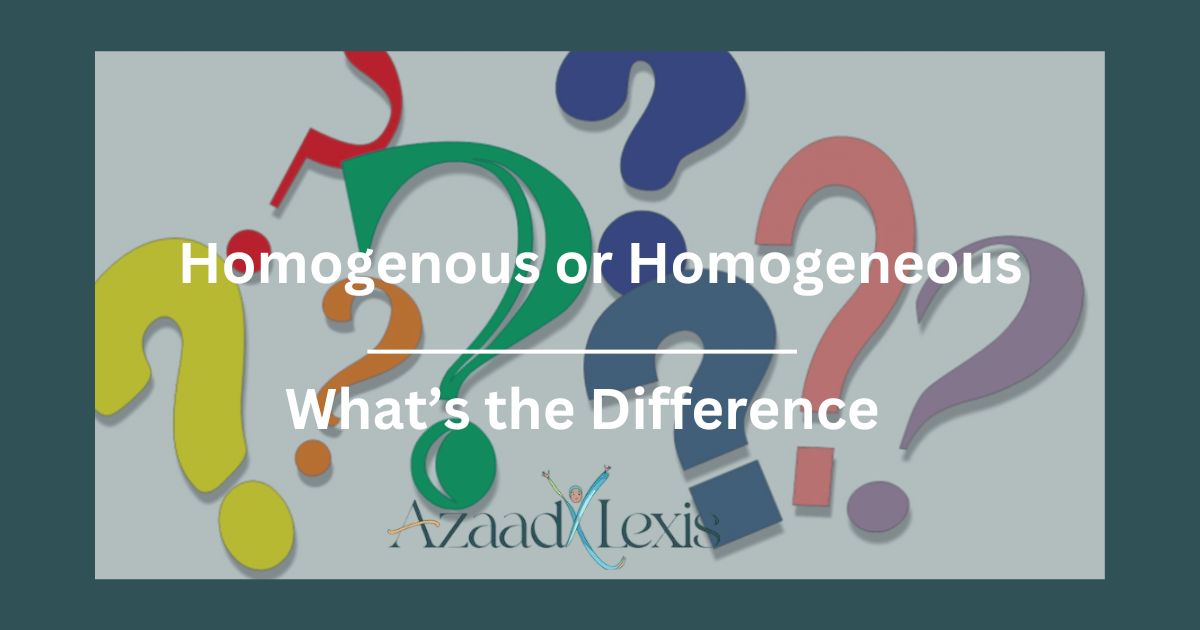In the realm of the English language, subtle differences in spelling can lead to significant variations in meaning. A prime example is the distinction between “homogenous” and “homogeneous.”
While these terms are often used interchangeably, they possess distinct definitions and applications. Understanding their differences is crucial for precise communication, especially in scientific and academic contexts.
Origins and Definitions
The term “homogeneous” is derived from the Greek words “homos,” meaning “same,” and “genos,” meaning “kind” or “type.” It is an adjective used to describe a substance or a group that is uniform in composition or character. For instance, in chemistry, a homogeneous mixture has the same proportion of its components throughout, such as a solution of salt in water.
On the other hand, “homogenous” is a less commonly used term that has its roots in the field of biology. It refers to something that has a common ancestry or origin. However, over time, “homogenous” has often been used as a variant spelling of “homogeneous,” leading to confusion.
Usage in Different Contexts
- Scientific Contexts
- Homogeneous: In disciplines like chemistry and physics, “homogeneous” describes materials or systems that are uniform in structure or composition. For example, a homogeneous material has the same properties at every point; it is uniform without irregularities.
- Homogenous: In biology, “homogenous” pertains to organisms or tissues that have a similar genetic makeup or origin. However, this usage is relatively rare compared to “homogeneous.”
- Everyday Language
- In general usage, “homogeneous” is employed to describe any group or mixture that is uniform in nature. For instance, a culturally homogeneous neighborhood is one where the residents share similar cultural backgrounds.
- “Homogenous” is seldom used in everyday language and is often considered a misspelling of “homogeneous.”
Read this Blog: Ways to Say “I Forwarded the Email” Professionally
Common Misconceptions and Errors
The similarity in spelling and pronunciation between “homogeneous” and “homogenous” has led to frequent misuse. Many assume they are interchangeable, but using one in place of the other can alter the intended meaning. For example, describing a solution in chemistry as “homogenous” instead of “homogeneous” may be considered incorrect by experts in the field.
Tips to Remember the Difference
- Spelling Association: Recall that “homogeneous” contains the letter ‘e’ after “homog-,” similar to the word “uniform.” This can help you remember that “homogeneous” relates to uniformity.
- Contextual Clues: If you’re discussing topics related to uniformity in composition or character, especially in scientific contexts, “homogeneous” is likely the correct choice. If referring to common ancestry in a biological context, “homogenous” might be appropriate, though this usage is rare.
Conclusion
Precision in language is essential, particularly in academic and scientific writing. Understanding the distinction between “homogeneous” and “homogenous” ensures clarity and accuracy in communication.
While “homogeneous” refers to uniformity in composition or character, “homogenous” relates to common ancestry but is infrequently used. Being mindful of these differences will enhance the effectiveness of your writing and help maintain the integrity of the information you wish to convey.

